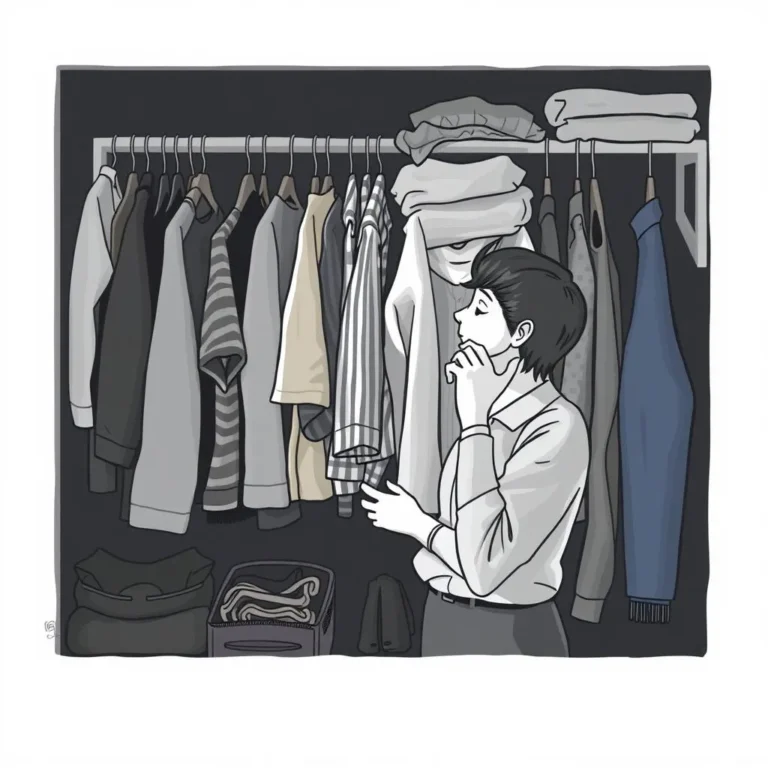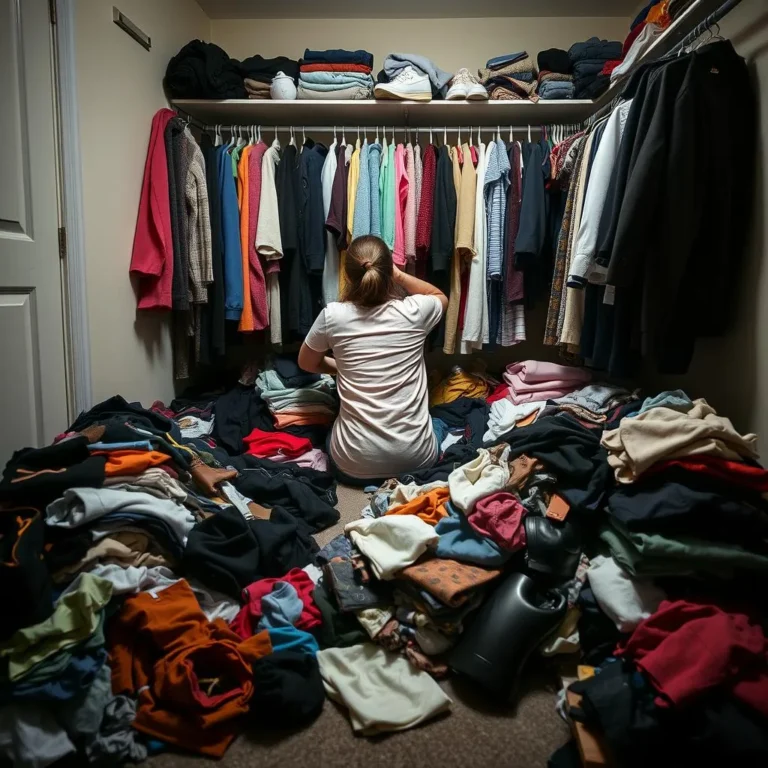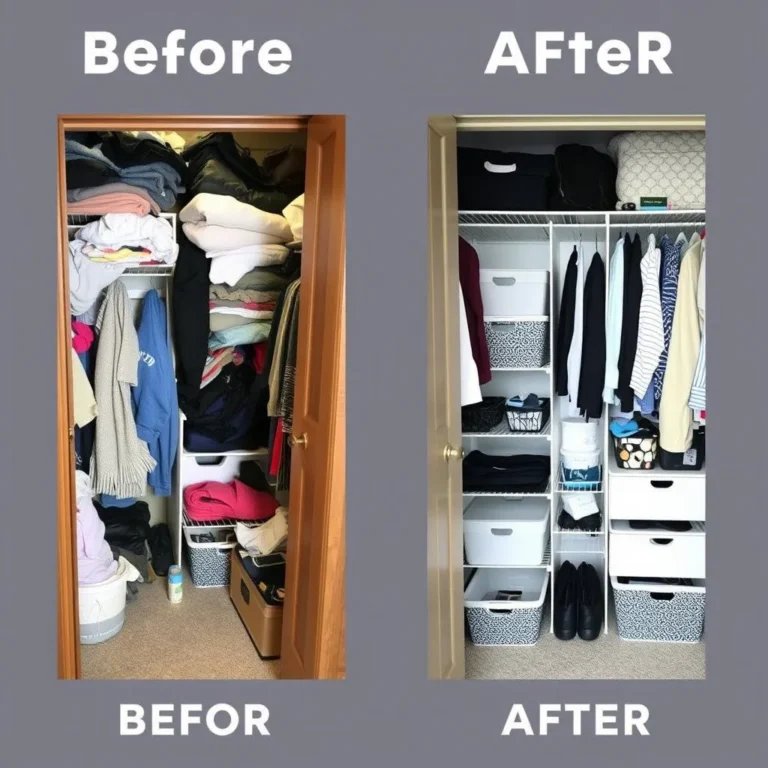Table of Contents
1. Introduction: The Great Clothing Conundrum
2. Assessing Your Wardrobe and Space
2.1 Decluttering: A Necessary First Step
2.2 Measuring Your Storage Space
3. Choosing the Right Storage Solution
3.1 Closets: Maximizing Vertical and Horizontal Space
3.2 Dressers: The Classic Choice for Folding
3.3 Shelving Units: Versatile and Adaptable
3.4 Vacuum-Sealed Bags: Space Savers for Seasonal Items
4. Smart Storage Techniques for Different Garment Types
4.1 Folding Techniques: The KonMari Method and Beyond
4.2 Hanging Clothes: Choosing the Right Hangers
4.3 Storing Delicate Garments: Special Care and Attention
4.4 Storing Shoes: Organization and Protection
5. Maintaining Your Organized Wardrobe
5.1 Regular Decluttering and Purging
5.2 Seasonal Rotations: Making Space for What You Need
6. Creative Storage Solutions for Small Spaces
6.1 Under-Bed Storage: Maximizing Hidden Space
6.2 Over-the-Door Organizers: Utilizing Unused Space
7. Investing in Quality Storage Products
7.1 Choosing Durable and Reliable Materials
8. The Importance of Proper Ventilation
8.1 Preventing Musty Odors and Damage
9. Protecting Your Clothes from Pests
9.1 Natural and Chemical Deterrents
10. Digital Organization: Keeping Track of Your Wardrobe
11. Sustainable Storage Practices
11.1 Choosing Eco-Friendly Materials
12. Budget-Friendly Storage Solutions
12.1 DIY Storage Ideas
13. Long-Term Storage: Protecting Your Valuables
13.1 Acid-Free Boxes and Encapsulation
14. Professional Organizing Services: When to Seek Help
15. Conclusion: A Tidy Wardrobe, A Tidy Mind
FAQs
The Best Way to Store Clothes: A Comprehensive Guide
1. Introduction: The Great Clothing Conundrum
Let’s face it: clothes storage can be a real headache. We accumulate clothes over time—from cherished vintage finds to impulse buys—and suddenly, our closets resemble a chaotic jumble sale. But what if I told you that achieving a perfectly organized wardrobe wasn’t about magic, but about a strategic approach? This guide will equip you with the knowledge and techniques to conquer your clothing chaos and find the best way to store your clothes. Are you ready to transform your closet from catastrophe to calm?
2. Assessing Your Wardrobe and Space
Before diving into storage solutions, we need a clear picture of what we’re working with.
2.1 Decluttering: A Necessary First Step
Think of decluttering as the foundation of any successful storage system. Be ruthless! Ask yourself: Have I worn this in the past year? Does it still fit? Does it make me feel good? If the answer is no, it’s time to donate, sell, or recycle it. 
2.2 Measuring Your Storage Space
Accurate measurements are crucial. Note the dimensions of your closets, drawers, and any other designated storage areas. This will help you choose storage solutions that fit perfectly.
3. Choosing the Right Storage Solution
The best storage solution depends on your individual needs and available space.
3.1 Closets: Maximizing Vertical and Horizontal Space
Closets are often the heart of clothing storage. Use shelf dividers to prevent stacks from toppling, and consider adding hanging organizers to maximize vertical space. 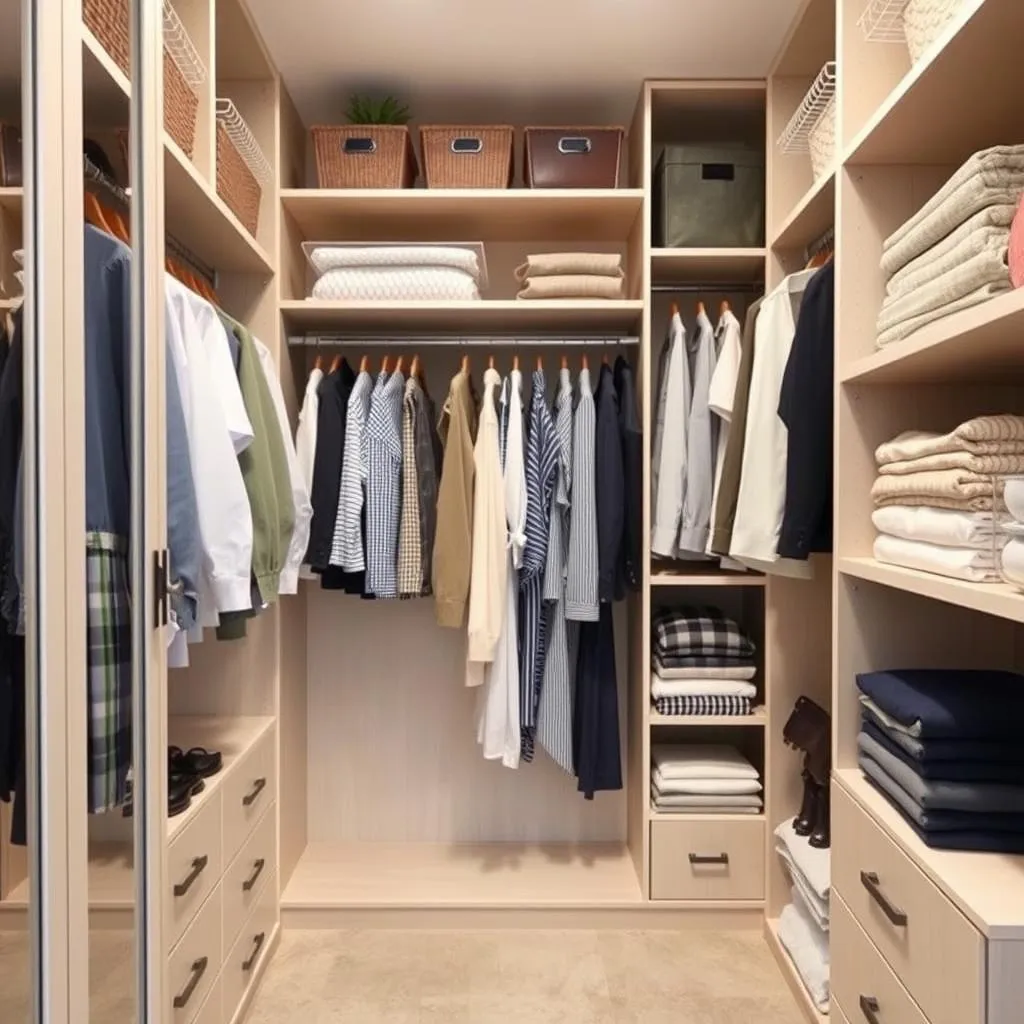
3.2 Dressers: The Classic Choice for Folding
Dressers offer excellent storage for folded items like t-shirts, jeans, and sweaters. Choose a dresser with drawers of varying sizes to accommodate different clothing items.
3.3 Shelving Units: Versatile and Adaptable
Shelving units are highly versatile and can be adapted to fit various spaces and needs. They’re perfect for storing folded items, shoes, or even accessories.
3.4 Vacuum-Sealed Bags: Space Savers for Seasonal Items
These bags are lifesavers for bulky seasonal items like winter coats or holiday sweaters. They drastically reduce storage space by removing air.
4. Smart Storage Techniques for Different Garment Types
4.1 Folding Techniques: The KonMari Method and Beyond
The KonMari method advocates for folding clothes vertically, making it easier to see everything at a glance. Experiment with different folding techniques to find what works best for you.
4.2 Hanging Clothes: Choosing the Right Hangers
Invest in good quality, slimline hangers to maximize space and prevent clothes from stretching or slipping. 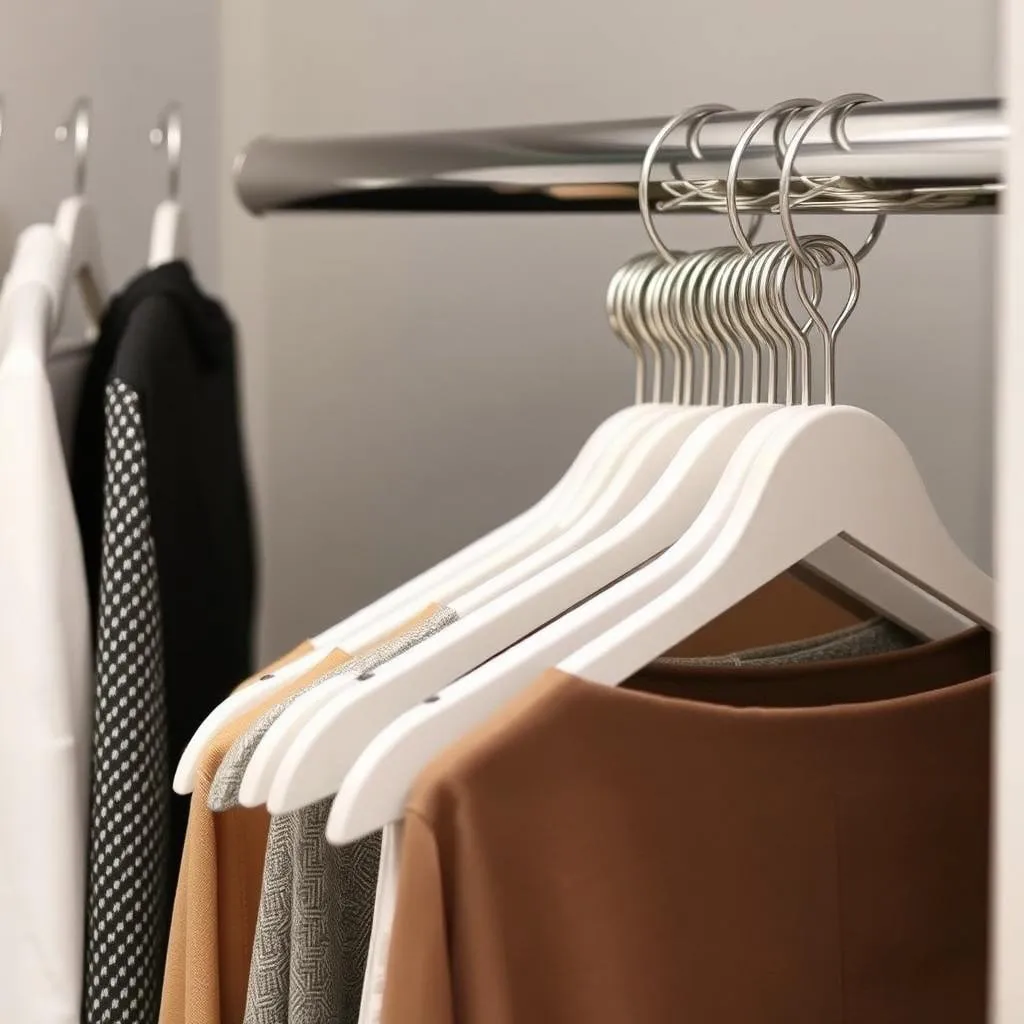
4.3 Storing Delicate Garments: Special Care and Attention
Delicate garments like silk blouses or cashmere sweaters require special care. Consider using acid-free tissue paper to prevent damage.
4.4 Storing Shoes: Organization and Protection
Use shoe racks, boxes, or over-the-door organizers to keep shoes organized and protected from dust and damage.
5. Maintaining Your Organized Wardrobe
5.1 Regular Decluttering and Purging
Regular decluttering prevents your wardrobe from becoming overwhelming. Aim for a seasonal purge to remove items you no longer wear or need.
5.2 Seasonal Rotations: Making Space for What You Need
Rotate seasonal clothes to make room for what you’re wearing currently. Store out-of-season items in vacuum-sealed bags or other designated storage areas.
6. Creative Storage Solutions for Small Spaces
6.1 Under-Bed Storage: Maximizing Hidden Space
Utilize the space under your bed with storage containers or drawers. This is perfect for storing off-season clothes or bulky items.
6.2 Over-the-Door Organizers: Utilizing Unused Space
Over-the-door organizers are ideal for small spaces and can store shoes, accessories, or even folded clothes.
7. Investing in Quality Storage Products
7.1 Choosing Durable and Reliable Materials
Invest in durable storage products made from high-quality materials that will last.
8. The Importance of Proper Ventilation
8.1 Preventing Musty Odors and Damage
Ensure proper ventilation in your storage areas to prevent musty odors and damage to your clothes.
9. Protecting Your Clothes from Pests
9.1 Natural and Chemical Deterrents
Use cedar blocks or sachets of lavender to deter moths and other pests.
10. Digital Organization: Keeping Track of Your Wardrobe
Consider using a digital inventory of your clothes; this is especially helpful for larger wardrobes. Apps and spreadsheets can be useful for tracking what you own and where it’s stored.
11. Sustainable Storage Practices
11.1 Choosing Eco-Friendly Materials
Opt for sustainable and eco-friendly storage solutions made from recycled or renewable materials.
12. Budget-Friendly Storage Solutions
12.1 DIY Storage Ideas
Get creative with DIY storage solutions to save money. Repurpose old boxes, jars, or baskets for storage.
13. Long-Term Storage: Protecting Your Valuables
13.1 Acid-Free Boxes and Encapsulation
For long-term storage of valuable or delicate items, consider using acid-free boxes and archival-quality materials to prevent damage.
14. Professional Organizing Services: When to Seek Help
If you’re feeling overwhelmed, don’t hesitate to seek help from a professional organizer.
15. Conclusion: A Tidy Wardrobe, A Tidy Mind
Organizing your clothes is more than just tidying up; it’s about creating a sense of calm and control in your life. By following these tips and adapting them to your individual needs, you can transform your closet into a well-organized haven.
FAQs
1. What’s the best way to store sweaters to prevent stretching? Fold sweaters loosely and store them horizontally to avoid stretching. Avoid using wire hangers.
2. How can I prevent clothes from getting musty? Ensure proper ventilation and use cedar blocks or sachets of lavender to deter moisture and pests.
3. What are some space-saving solutions for small closets? Use slimline hangers, vertical shelving, and under-bed storage containers.
4. How often should I declutter my wardrobe? Aim for a seasonal declutter, but smaller purges throughout the year are also beneficial.
5. Are vacuum-sealed bags safe for all types of clothing? Vacuum-sealed bags are generally safe for most clothing, but it’s best to avoid using them for delicate items or those prone to wrinkles.

